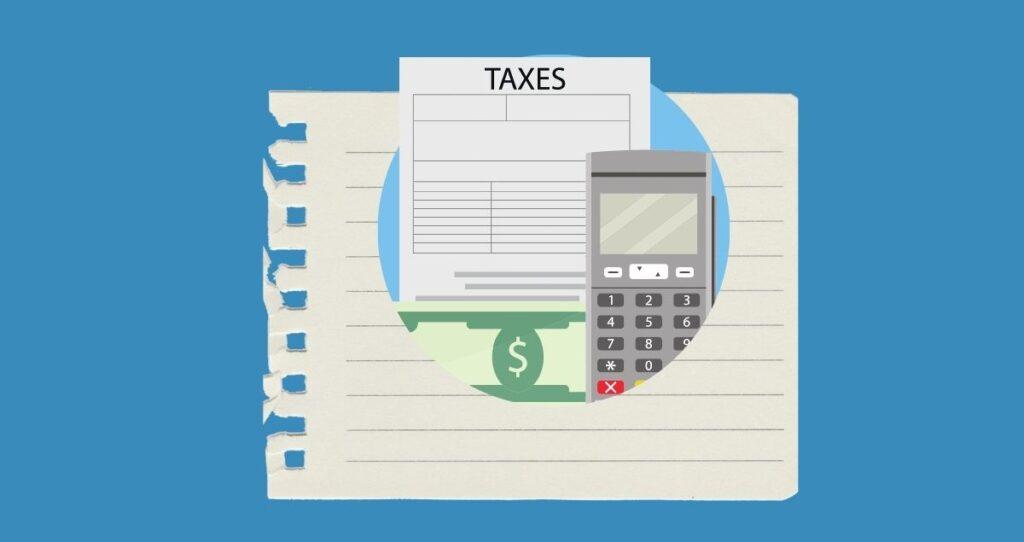NOTE to borrowers and Investors: After acquiring Radius Bancorp, LendingClub decided to retire its Notes platform starting on December 31, 2020. After this merger, LendingClub has become LendingClub Bank or Radius Bank. For this reason, the platform has decided to retire its note platform. Existing investors with notes can open a Founder Savings which is like a high yield saving account or transfer their funds to other financial institutions. The mobile application that supports these products has been terminated as well. However, existing members can still access their information on the LendingClub Web Portal. Follow this link, for more details.
Lending Club is one of the leading peer-to-peer lending websites available. Both borrowers and lenders can use this platform to meet their financial needs. As an investor, you can lend your money to borrowers through LendingClub and collect an ROI. The money you will make through LendingClub or any other p2p lending platform will come in the form of interest charges paid by borrowers.
When it comes to investing, there are many choices to make. Some investments such as real estate investing are demanding and require active management. However, there are some investments you can choose that require minimal work.
Among these investments, peer-to-peer lending is a great option. The process is simple and straightforward. In addition, you don’t need to actively manage your account.
If you are an investor who is looking to make a passive income with little to no work, keep reading. This article will be your guide to investing with LendingClub.
Can you make money on LendingClub?

The main question you are probably asking is whether you can make money with LendingClub or how much money you can make on a LendingClub. The quick answer is: Yes you can make money on LendingClub and many people are making decent passive income from it. For more details about this answer and how much money you can make with LendingClub, keep reading. Below, I have detailed exactly how much money you should expect to make on LendingClub and some of the strategies you can use to maximize your returns and minimize your losses.
How to start an investment account on LendingClub?
Before making money with LendingClub, you will first have to create an investment account and get approved. When creating an online account, the following is some information you will need to provide.
- Full name
- Date of birth
- Physical/mailing address
- Any other information that helps identify you such as SSN, Photo ID, etc.
Once your account has been created and approved, you will then have to fund your investment account.
The lowest investment about you can make is $25 and these investments are called notes. As an investor, you must build a portfolio that reduces your risks and maximizes your returns. What many people do is lend out many loans across many qualified borrowers to minimize risks in case some of those borrowers default.
The platform screens borrowers using many metrics such as credit score, income, financial history, debt-to-income ratio (DTI), past delinquent payment, collections, etc. Borrowers are then classified into classes or groups to help you make choices that meet your risk tolerance and investment style.
In order to make money with LendingClub, you will need to create a profitable portfolio. As an investor, you will scan through many borrowers and decide to invest in their project or note. For example, if you want to play it save, you would decide to invest in borrowers with the highest credit score, higher income, lower DTI ratio, with no delinquent payments, etc.
This technique ensures that the borrower will most likely make their payments on time. Hence, increasing your returns and reducing your losses. You should divide your investments into small loans to protect your portfolio.
For example, let’s assume that you have $5,000 you want to invest in LendingClub. Instead of giving out 5 loans with $1,000 each, you can divide that amount into 100 notes of $50 each. With this strategy, you will not lose that much even if a few borrowers default. Assuming two borrowers defaulted, you will only lose $100 or 2% of your entire portfolio. This loss would look different if you invested $1,000 in one account and lost it. In this case, your loss would be 20% assuming your portfolio is worth $5,000.
What is the minimum investment on LendingClub?

LendingClub does not require a lot of money for each investment. They know that not every borrower will be able to make all payments on time and not every investor is willing to stash a large sum in a single investment. That is why the minimum investment requirement for LendingClub is also low.
The minimum investment at LendingClub is $25. That is right. You can invest as little as $25. Putting too much money in one borrower’s project can be risky. But, if you lose a $25 note because one of the borrowers you funded defaulted, you can still be OK.
Can you make money with LendingClub?
The quick answer is: Yes, you can make money on LendingClub. Bare with me, I will explain in more detail exactly how much you expect to make with LendingClub in a minute.
All investments do not yield the same returns. That is because each investment differs from the investment choices you make, the length of investment, and your risk tolerance.
As you build a portfolio, the type of investments you will pick will depend on the criteria you will select. You can either choose to fund borrowers with the best credentials with minimal risk of default on the loans or take some risks for higher returns.
How do lending businesses work?
When it comes to lending money, the borrowers are classified into different categories based on credit score and other credentials. The following are categories of borrowers based on their credit scores.
- Superprime borrowers: Credit score of 720 and above (least risky borrowers, and therefore, qualify for the best interest rate from the lender and can qualify for any loans)
- Prime borrowers: Credit score between 660-719
- Near-prime: Credit score between 620-659
- Subprime: Credit score between 580-619
- Deep subprime: Credit score below 580 (the riskiest borrowers, and therefore, they pay the highest interest rate, and do not qualify for loans in most cases)
Superprime borrowers are less risky borrowers. This means that they have the best credentials possible. The benefit of being a less risky borrower is that you qualify for the lowest interest rate. The lenders have higher chances of getting their money back which lowers their risks of lending you money. Hence, giving you a better deal.
On the other hand, as you go from superprime borrowers to deep subprime borrowers, the risks increase. For example, deep subprime borrowers have higher chances of defaulting on their loans. To balance this risk, lenders charge them the highest interest rate (some of them do not even qualify for loans).
As someone who wants to make money with LendingClub, you need to understand how lending businesses work. By only lending money to the best borrowers, you increase your chances of getting your money back. However, you automatically reduce your return on investment because your profit comes from the interest they pay.
On the other hand, if you choose to fund risky borrowers, you will be chasing high returns. The downside of this technique is that risky borrowers are more likely to default. Hence, increasing your chances of losing money.
A good investor is one that can build a portfolio that maximizes returns and reduces losses. To make a good return on LendingClub, you need to balance risks and returns. Always remember that high returns come with higher chances of losing.
How much money can you make with LendingClub?
Finally, the best part you have been looking for. As an investor who wants to make money with LendingClub, your main focus will be on ROI. You will judge your investment strategies and success based on how much you are getting in returns.
In order to protect your portfolio and increase your ROI, you must first reduce the number of default notes.
That is you need to fund less risky borrowers. Borrowers with high credit scores, high incomes, less DTI, with no bankruptcies, collections, foreclosures, etc., tend to be more reliable.
You would make these selections in your own LendingClub account when building your portfolio.
How much can you really make on LendingClub?
Assuming that you have done your homework, let’s see how much money you should expect to make on Lending club? According to Good Financial CENTS, you should expect to make between 5.06% and 8.74%. Keep in mind that this return can vary over time due to an array of factors. For example, if the platform loses customers, it can lower the interest charges to borrowers and increase fees on investors. This could directly affect your ROI.
Fees and charges investors pay LendingClub

All peer-to-peer lending websites play a role in connecting investors and borrowers. For this service, these platforms charge fees on both parties involved in investment and lending services through them. The borrower pays a fee such as a loan origination fee and other charges. At the same time, investors pay fees such as service fees.
Since this article was written to only help investors, we will only talk about fees and charges investors pay to LendingClub. As an investor, you should pay attention to how much you pay in fees. This is because your return on investment (ROI) is limited, and therefore, every dollar you pay in fees and charges reduces your profit.
The following are the fees that LendingClub charges its investors.
- 1% service fee on each payment received by the due date
- Up to 40% in collection fees on all money collected in delinquent loans
LendingClub charges the 1% fee because it manages the investors’ accounts, collects principal and interest, and manages distribution payments on the behalf of investors. As an investor, you must compare this fee with other investments options and their returns when choosing the best investment option.
How much can you borrow from Lendingclub?
Like any other P2P lending platform, there is a limit to how much you can borrow. Borrowers can borrow up to $40,000 in personal loans and between $5,000 to $500,000 in business loans with fixed rates.
LendingClub has a wide range of fees and charges to borrowers. As a borrower, you will be expected to pay an origination fee that is between 1%-6% and it is a one-time payment. Once given the loan, you will pay an annual percentage rate(APR) that is between 5.99% to 35.89%.
Automation of your investments in LendingClub
One of the greatest benefits of LendingClub is that you can automate your investment. There is an automation feature in your investment account that allows you to reinvest your returns without having to do it manually.
You just make investment selections and have your returns reinvested based on those selections. For example, you can choose to reinvest your returns to customers with a 750 credit score, $80,000 income, DTI ratio under 25%, with no financial stress. Once your money comes in, it will be reinvested to qualified customers based on these requirements.
What are the risks associated with investing in P2P lending
All investments come with risks and rewards. However, the risks will differ from one investor to another due to investment choices and other factors.
The following are some of the risks you should expect to encounter as an investor on LendingClub.
- Management fee of 1% and can change any time
- Some borrowers will default and that will be out of your reach. It is solely based on the borrower’s financial standing
- Economic conditions could make it difficult for almost all borrowers to make their payments. This will lead to the loss of your capital
- Inflation will eat through your returns. Just because you made an 8% return, it does not mean you are safe. With inflation being 7.9% in March 2022 (according to Bloomberg), it means that out of that 8%, the inflation wiped off 7.9%. You technically made 0.1%.
- Competitors: LendingClub is not the only p2p lending platform. The competition could make you move to other providers especially if the fees are lower and services are greater.
Pros and cons of LendingClub
Every investment you will choose no matter what it is will come with its own pros and cons. On top of risks associated with your investments, the platform may have key points that could either minimize your returns, make the platform less competitive, or simply annoy you. LendingClub is not immune to this rule. If you want to make money with LendingClub, keep in mind that there are a few things you will need to cope with for that return.
Pros of LendingClub:
- Checking your rates does not affect your credit score (the check does not result in a hard pull or hard inquiry)
- Borrowers can qualify for loans even for a (600) credit score
- The loans are long-term up to 60 months (5 years)
- Investors can automate their investments which can turn their investments into passive income money machines
- Borrowers are well screened and ranked. This helps investors to customize their investments based on their risk tolerances.
Cons of LendingClub:
- Fees: Investors pay a 1% service fee for every loan received. Borrowers pay 3%-6% in origination fee. The fee will eat in your profit.
- There are a bunch of other charges you pay on top of fees. For example, borrowers pay $15 or 5% of the unpaid funds whichever is greater. A $15 charge is also applied when there are no funds in the bank account you used for your payment.
- Investors pay a huge amount (up to 40%) in collection fees for the amount collected in delinquent loans.









